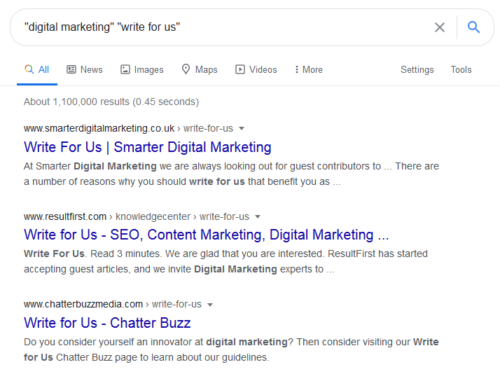As a website owner, you’ll know that you need written content. And lots of it. Because a website without the right words is just a silent movie. Don’t get us wrong. We’re big fans of the old black and whites. But we’re doing the day job here. Words are our thing. It’s the words on a web page that ‘speak’ to your readers. Persuasive copy grabs attention. It makes visitors want to read more.
It convinces them to do something by clicking on your call to action. Writing the words to make this happen is usually the joy, or the bane, of content marketing. For bloggers that see this as the bane, offers of great content from brilliant guest contributors like you will help to nudge them to the joyous side. Sites that already accept guest posts will always welcome more.
Please note: we are not currently accepting guest posts
If you’ve already read our recent post on why you should accept guest posts on your site, you’ll also know the reasons why it’s beneficial (on both sides). If not, let’s quickly recap:
- Enrich the reader experience – websites are always on the lookout for fresh content to add to the diversity of what they publish. It’s a big commitment to regularly create a high volume of unique content.
- Get your voice heard – get your name out there by sharing your expertise and experience.
- Gain more kudos – posting as an expert in your field on a reputable site is a great way to create a buzz about your brand.
- Reach new audiences – connect with new readers that don’t know about your brand.
- Increase traffic to your site – the host site will post and share your content which helps you attract fresh leads and build your subscriber list.
- Build powerful backlinks – build those all-important backlinks that Google reads as a vote of confidence in your brand. This will improve your domain authority (scaled from 1 to 100 – DA is a prediction of how likely it is that a website will rank on page #1 of search results for your chosen keywords).
- Increase networking opportunities – build rapport with influencers in your niche.

Ready to dip your toe in? Let’s get started
We don’t want to create more work for you. So we’ve distilled the tried and tested path to successful guest posting down to 5 easy steps.
You’ll learn how to:
- Pinpoint who your target audience is
- Find the right guest post opportunities
- Work out if a website is a good fit and create a shortlist
- Write a pitch that gets read
- Submit your post at its best

1.Who is your target audience?
The first thing you need to nail down is who your target audience is.
- What does your ideal customer look like?
- Is there a hard-to-reach demographic that a more established website can help you get in front of?
Okay – now you know who you are writing for, you’re all set to do your research to build a longlist of websites that are a potential good fit.
2.How to find guest post opportunities
Start with the blogs you read. You’ll have read lots of posts already and should have a good idea of what you would bring to the table. Then venture outside of your comfort zone and search for websites in your niche that accept guest posts.
Use Google search
Search for websites that accept guest posts on the topics you write about.
“digital marketing” “write for us”
“digital marketing” “become an author”
“digital marketing” “guest post by”
“digital marketing” “guest post”
“digital marketing” “submit a guest post”

Use the searches related to your query at the bottom of the page to see the other keywords that people are also using. You can see below that SEO guest posts are also a top search.

Social search
Use the same search technique on Twitter. You’ll also want to know that the host site will already be active on social. They should have high quality followers and regularly share your content. When you come to create your shortlist these are the types of factors that you’ll need to consider.

Research your competitor backlinks
If your competitors are ranking well for your target keywords then they will have a solid backlink profile. Use tools like SEMRush to look up websites that link to your competitors. Add these websites to your list for consideration.
Some websites have done the heavy lifting for you
Check out lists that others have compiled of high authority websites that accept guest posts. Each comes with a link to find more information about ‘contributing’ and a rating on whether it’s hard, moderate or easy to get published.
Find out more about our blog writing service »
3.Are your target websites a good fit?
Now we’ve got down to the nitty gritty of creating your shortlist to pitch to.
Here’s a quick checklist to help you filter sites
Topics – are there content gaps where you would bring fresh expertise? Does your site fit in the niche of your target site? The first thing that any editor worth their salts will do is check the quality of the content on your website.
Guidelines – does the site already have a ‘Write for us’ page? Be sure to read any content and publishing guidelines so you can check whether you’re a good fit.
Style and tone – websites take years to establish an authentic voice to strike the right tone and talk in the same language as their readers. While you will bring some of your own unique voice, you’ll need to blend in well with their branded content.
Content length – does the website only publish posts that are around 2,000 words? Is this something that you are used to writing? Do you have the time to commit to longer articles?
Post comments – do posts attract lots of comments? Blogging isn’t broadcasting. You want people to engage. You want to deepen relationships and build a community. Comments show that you are writing valuable content (we hope). They also give you fresh ideas for more content.
Social profiles – are your target sites active on social media? Do they have an authentic, high quality follower base? Don’t just look at the number of followers though. You’ll want to know that their audience is engaged and sharing all that brilliant content. Shares with links will boost your SEO.
Domain authority – you want to write for sites with a high domain authority. Search Engine Journal recommends writing for sites with a DA over 30 to quickly rank. Use Moz’s Open Site Explorer to check a site’s authority score (and backlink profile).
Traffic – which blog will help drive more traffic to your site? Search the site URL on a free tool like SimilarWeb to see what its future traffic looks like and gauge how popular the website is.
Networking opportunities – does the blog organise ‘events’ where you can cultivate relationships with influencers in your niche? We’re not talking about building rapport with Kardashian-grade influencers here. Micro influencers with just a few thousand followers that want to engage can be super effective. Keep an eye out for influencer marketing events as the world shifts online.
You’ve got your list of websites that are a good match. Now you need to think about your approach and pitch.
Free download – 2023 SEO checklist
Download our survival kit and take your content from zero to hero.SEND ME INSIGHTS
4.Getting your pitch right
Star guest bloggers wait for opportunities to come to them. We’re guessing that you haven’t reached those dizzying heights just yet. So you need to start somewhere to get a foot in the door and build your little digital black book. The best way to get started is with some basic blogging and social media etiquette. This will help you get you on the radar of the sites that you want to write for. You’ll want your name to be recognised in an inbox, social feed or DM when you pitch.
Get involved and join the conversation. Leave a comment on a blog post. Engage with social posts and tag the author or editor in your messages.
Pitching your article to a website
Don’t pitch to a site that you haven’t done your homework for. Devour the posts they already publish. Read any guidelines back to front and then back again. Look for an editorial calendar or lists of topics of interest to the site. Even if you are familiar with a site, do your research.
Some editors hate cold emails. Reach out through social media channels first if the website doesn’t insist on an email. All editors hate irrelevant pitches

If you are sending an email…
Email templates – write your own email. You want to stand out. If you’re using a template then chances are the editor has seen it many times.
Subject line – use any words in the subject line that the website asks you to use. Keep it simple. It’s what editors want. ‘Guest post contribution’ will do it for websites that regularly accept guest posts. For those that don’t, then get a little more creative and include a hook. Keep the line short so it’s readable on a mobile.
The ‘ask’ – make a clear ask at the beginning and end of your email.
Personalise and build rapport – mention a post they have already published and explain why you like it
A brief bio – the best pitches offer something that is valuable to readers that isn’t already covered. Briefly explain who you are and how you could add value. Include sample links.
Organic traffic potential – are you targeting untapped keywords that have organic traffic potential?
Being responsive – explain that you will reply to comments, promote and link back to the content in future posts.
Connect – link to your website and social media pages at the end.
5.Submitting your post – what to do
By now you should be familiar with any guidelines for submitting a guest post. Each site is individual but there are steps you can take to make sure your post is polished and professional.
You’ll be applying the same blogging standards that you would for a post on your site. But remember:

Don’t plug your business – you want to create unique content that is interesting to the reader. It’s not an elevator pitch.
Format – follow the post formatting on the host site’s blog.
Internal links – include links to relevant content on their blog.
External links – external links should be to credible sources of information – not your website pages.
Comments – include a call to action for comments.
Images – include images (and image credits where necessary).
Guest bio – include a link here to your homepage. Or a page that aligns with your goals. If you want a reader to download your latest eBook then link to that landing page. Don’t forget your social media handles.
What next?
We hope you’ve found these tips helpful. If you get organised and work from the reader back, do your research to find websites that help you achieve your goals, create a shortlist of sites where you add value and fill content gaps, personalise your pitch and follow any submission guidelines to the letter, you’re on the right path to success.
Anything else you need to know? Leave a comment below and we’ll get right back.
To find out more our SEO and blogging service, give us a call on 01803 865025 or drop us a line.

Knowing this information are very helpful for us. Thank you so much for sharing this! Quick question, is guest posting could help you to increase your domain rating?
Hi – glad you enjoyed the post! If the guest post is on a high authority (and relevant) site, and you’re able to include a ‘follow’ link back to your site then yes, it can certainly help with your ranking over time.
Guest posting is one of the best ways to drive huge amount of traffic to your website. There are various site that allows you to write for them. Through guest posting you also get a chance to build a strong relationship with other bloggers.
Excellent Work Keep it up, You have Great Skills Of Writing Blogs.
I could definitely use some of the sites for guest posting opportunities for my home improvement site. Thank you!
I must say that it is a very comprehensive list!. I like everything! Thankful for sharing!
Thanks a lot for sharing this guest posting site list.
Such a useful list. It will surely help me. More power to you.
I’m so glad you loved my article about guest posting sites.
Thanks for sharing this article. I do a lot of guest post in the past and I used this exact method.
Excellent & Valuable Article, You have Great Skills Of Writing Blogs. I could definitely use some of the tips.
Thanks
John
Director – https://mobilights.com
Thank you so much for this wonderful and valuable content. It contains a lot of knowledge and would definitely be helpful for others as well.
Very good and creative method for building backlinks to your site and also traffic. It’s very good! Thanks a lot for this post!